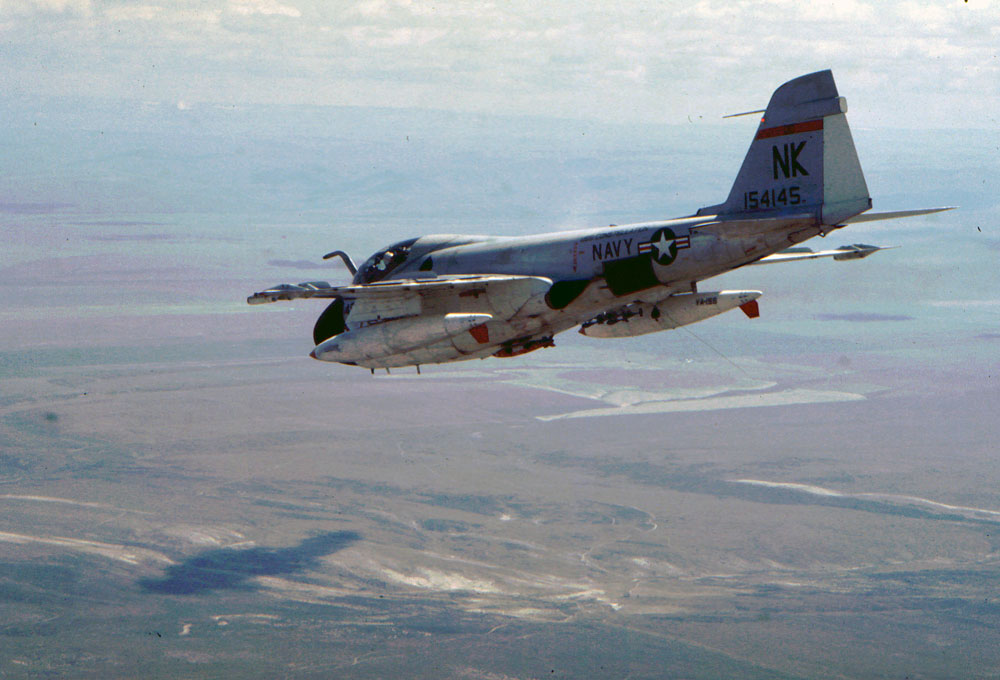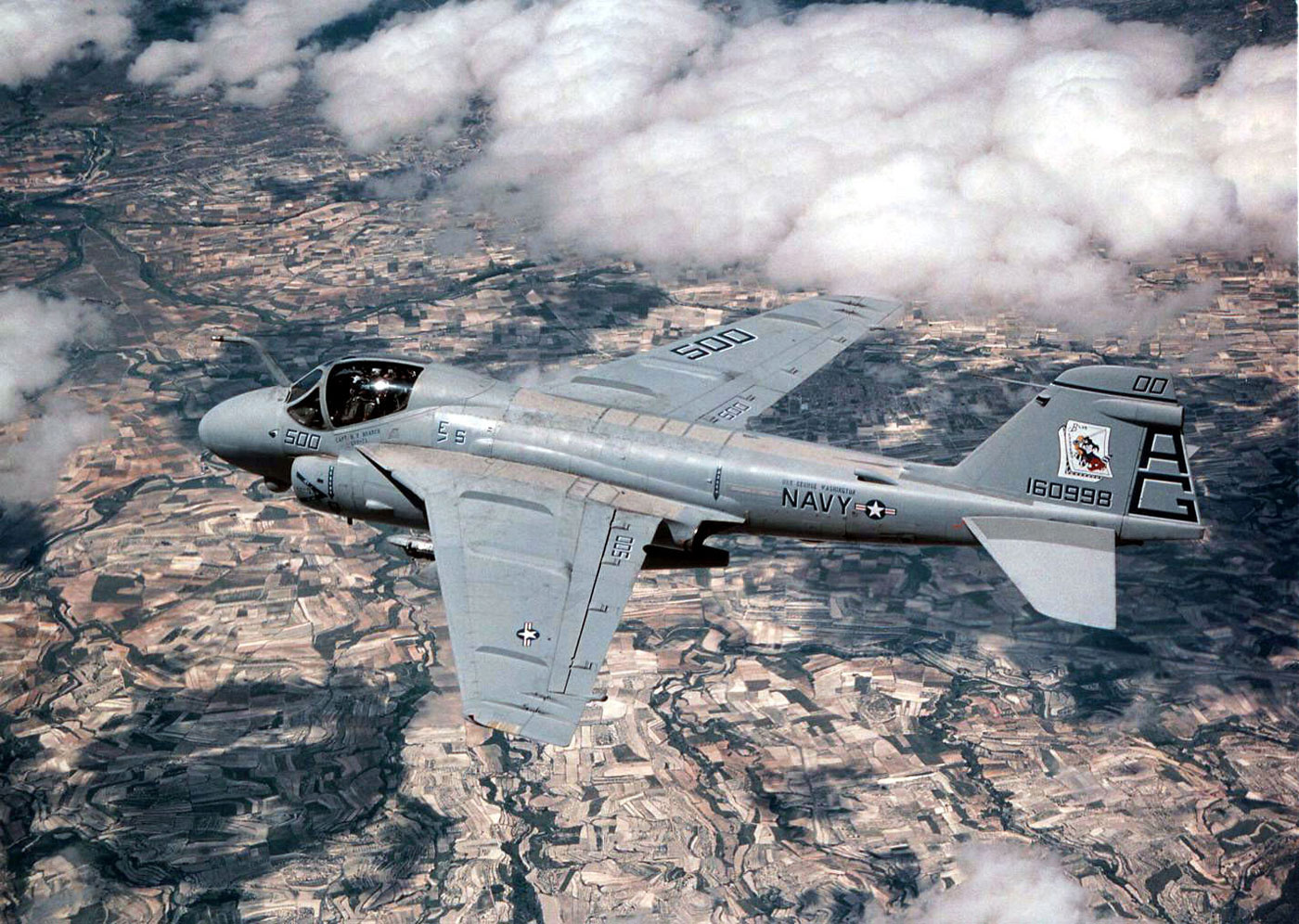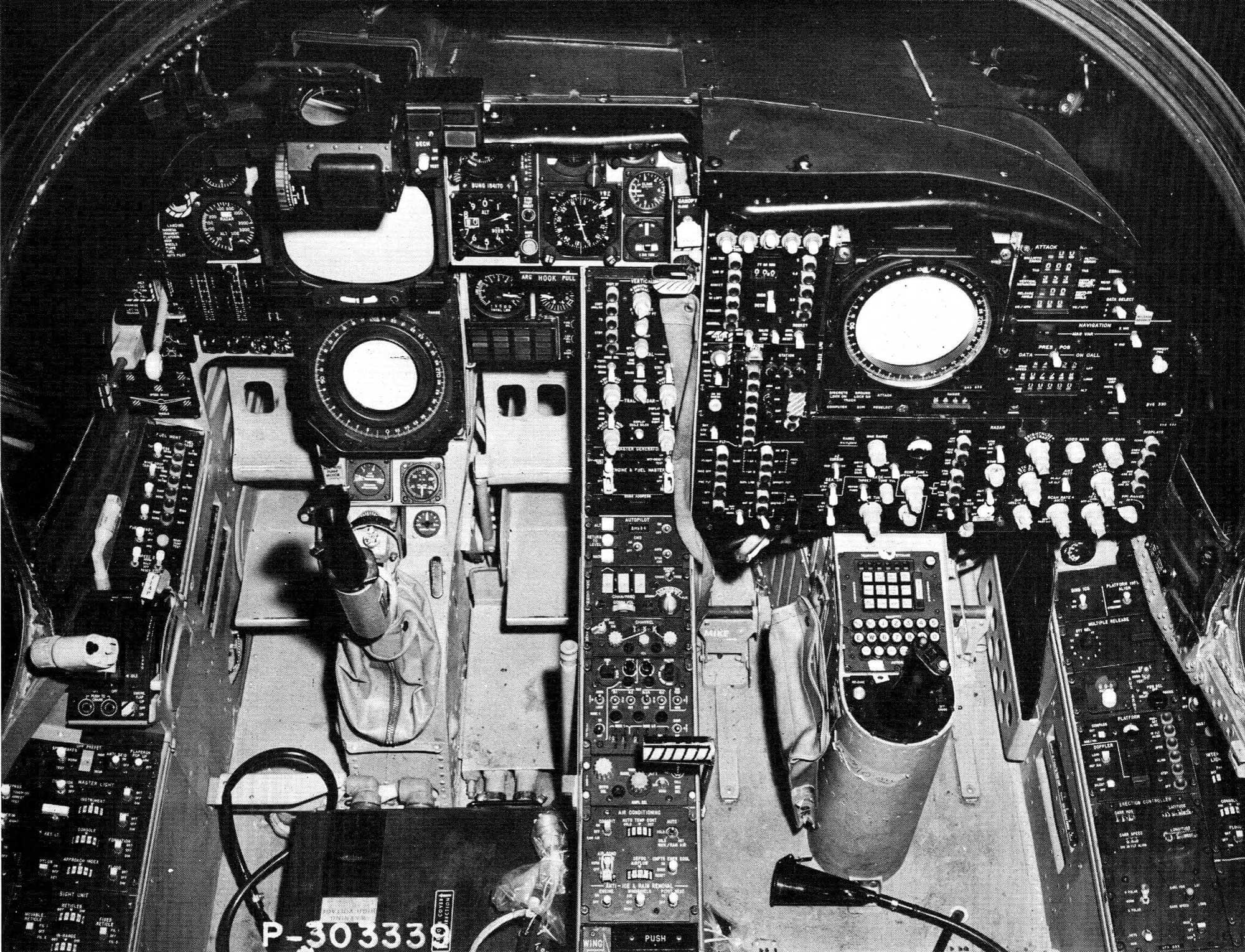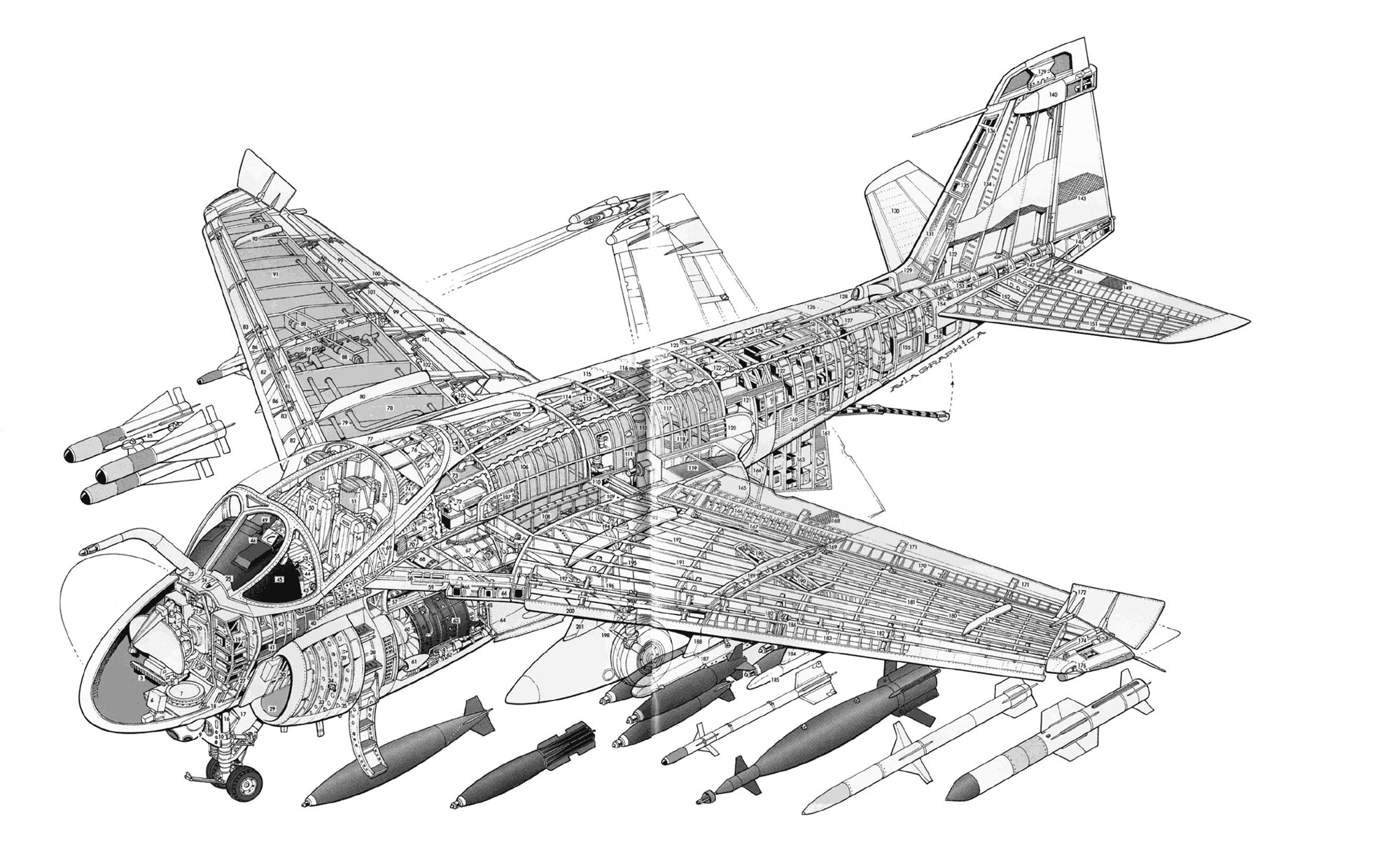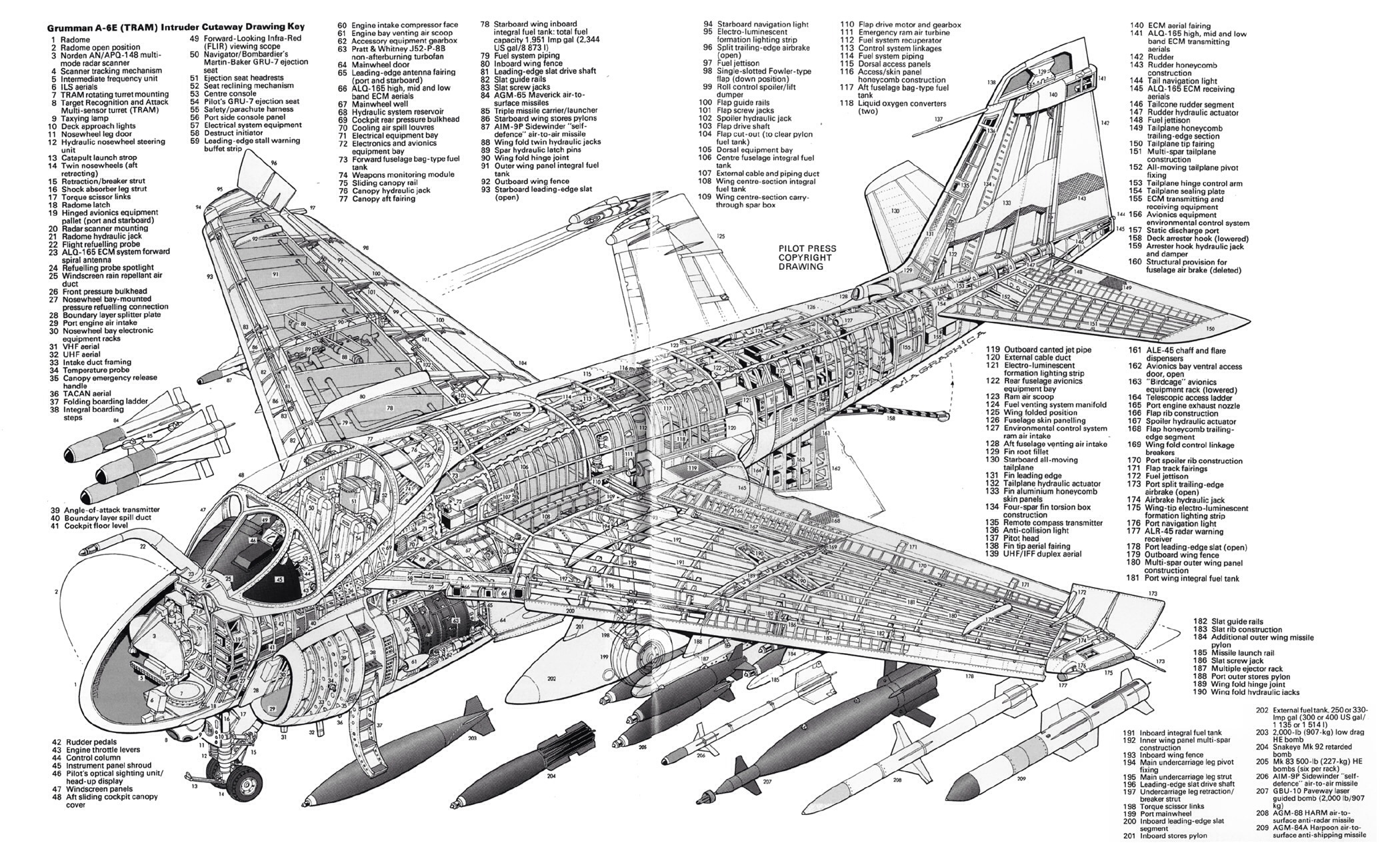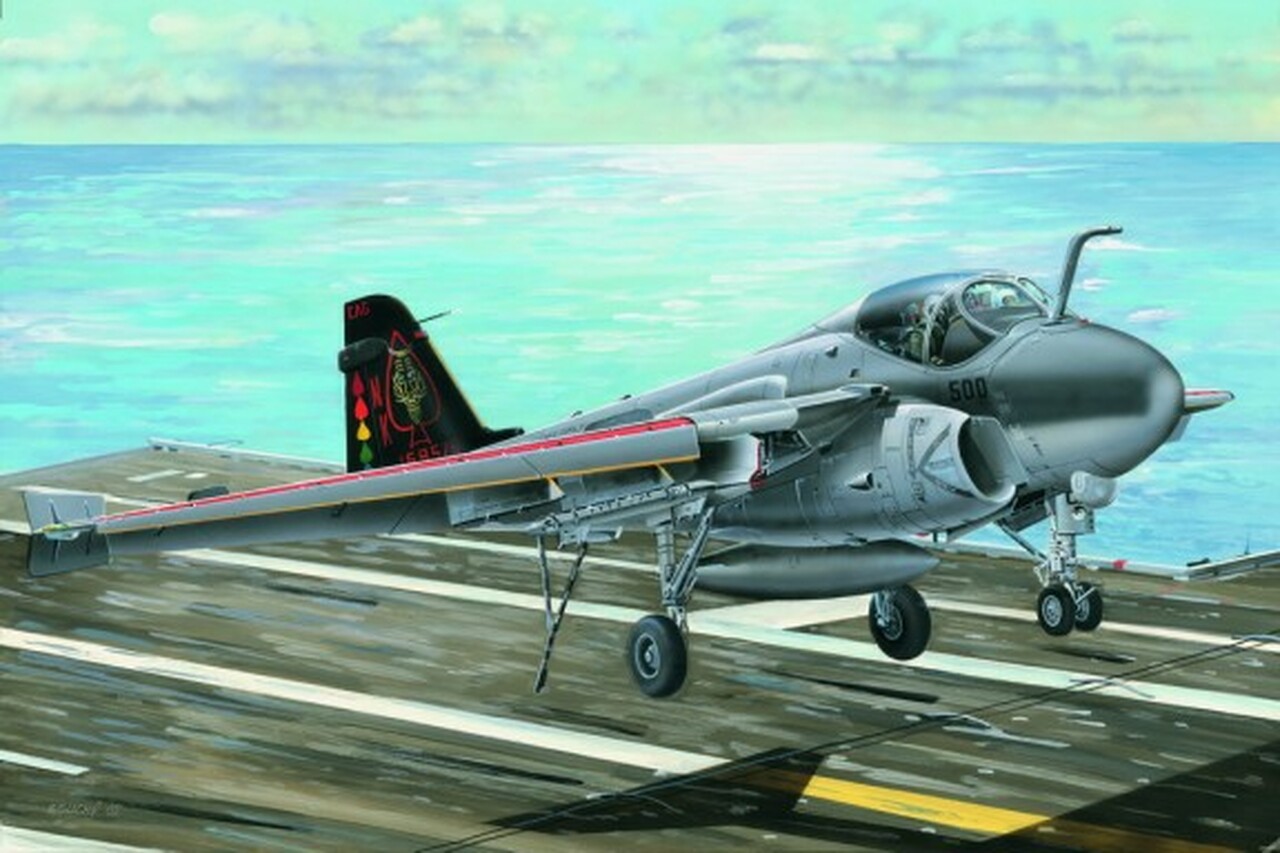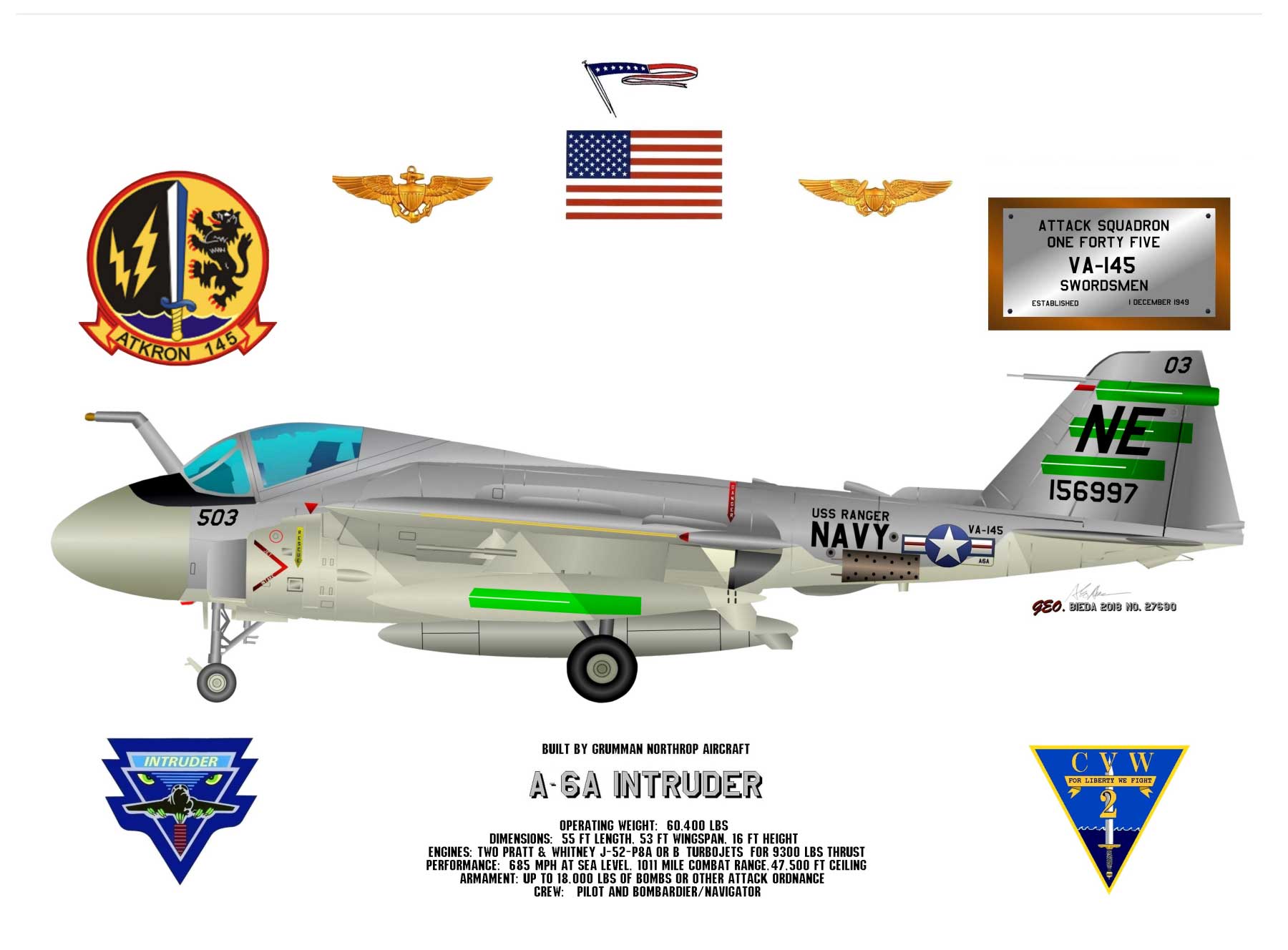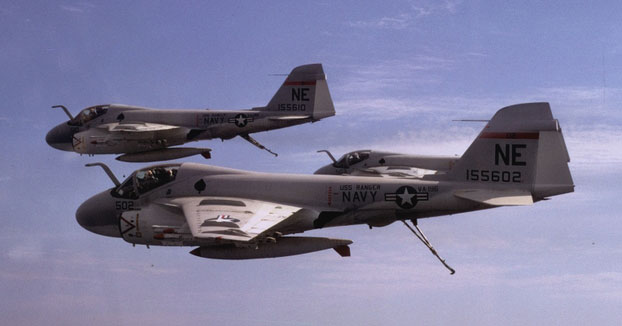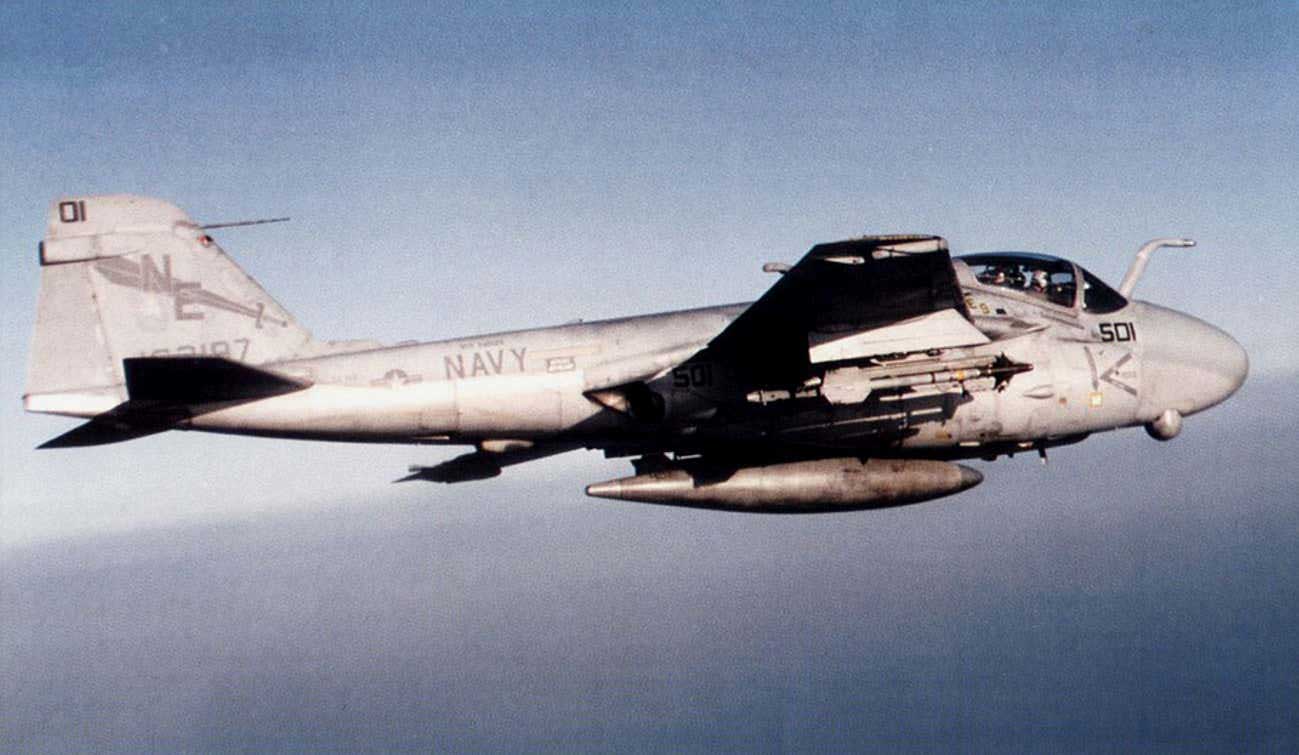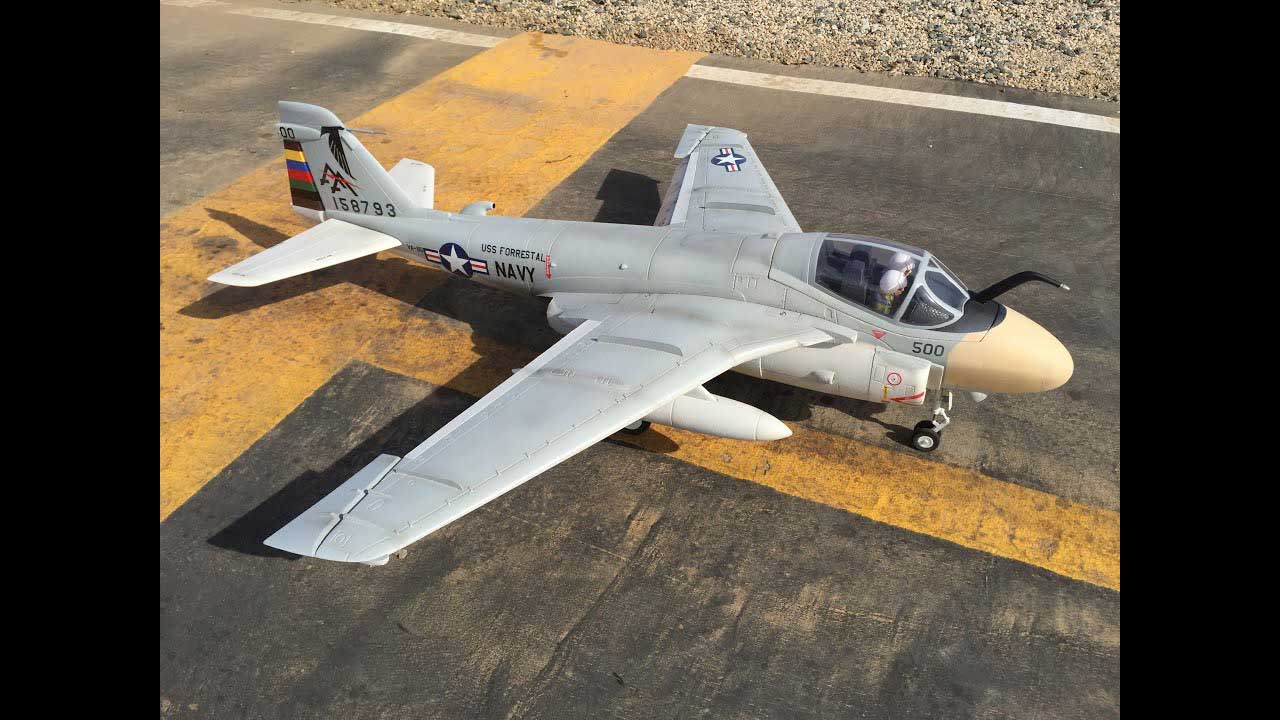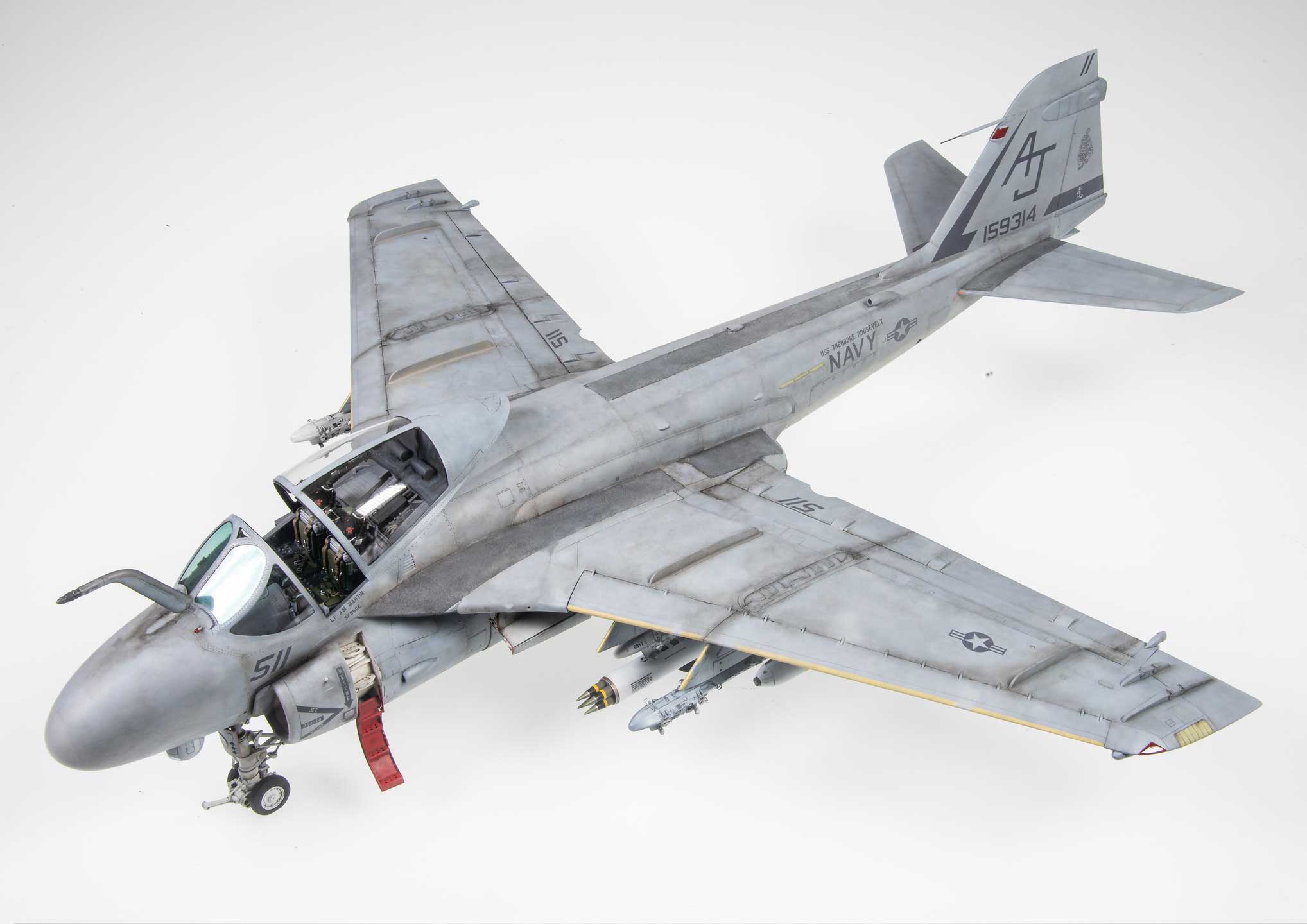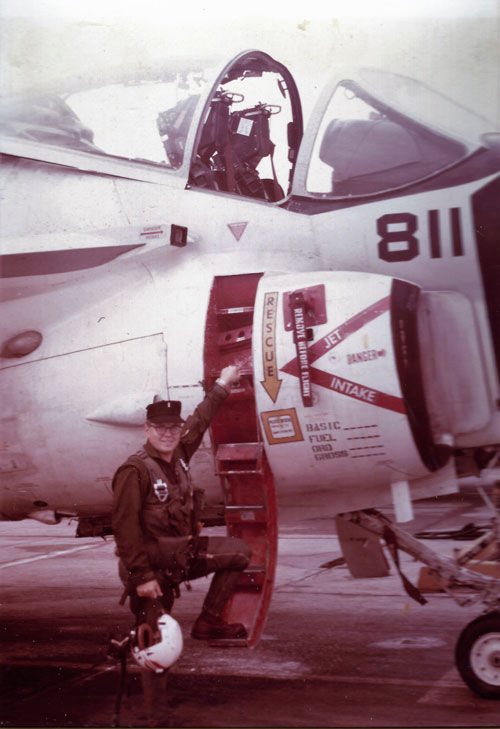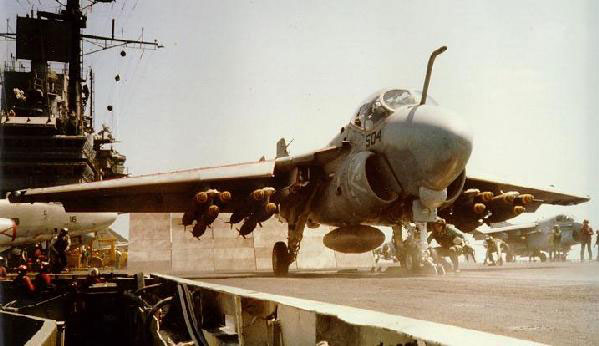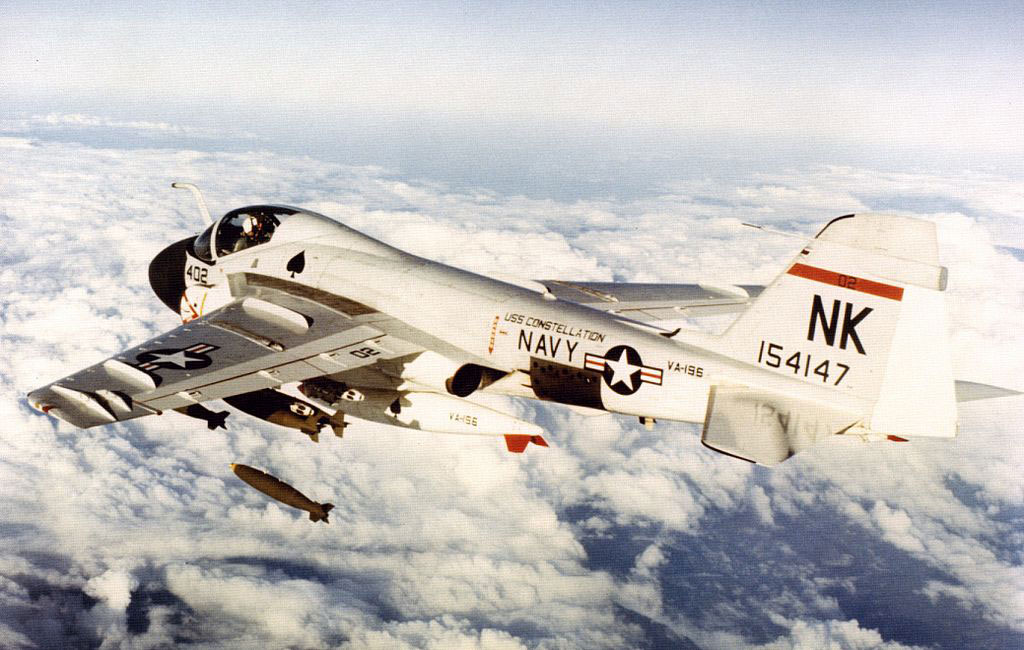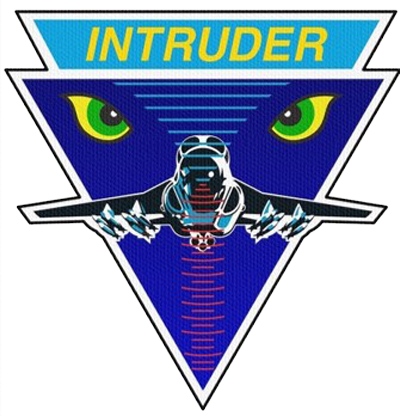About The A-6 Intruder
The A-6 Intruder was designed for the U.S. Navy to be the nation’s first fully all-weather carrier-based attack bomber, capable of delivering both conventional and nuclear ordnance on target under zero-visibility conditions.
The Intruder had a wing span of 53 feet and was 55 feet in length. Its twin turbojet engines were capable of launching it from an aircraft carrier at a maximum takeoff weight of 58,600 pounds. In flight, it was capable of flying at nearly 560 knots (650 mph) and could penetrate enemy airspace with a full weapons load to a range of nearly 900 miles. Its five external stores stations could accommodate a total payload of 18,000 pounds.
The Intruder was manned by a crew of two - pilot and bombardier/navigator - seated side by side. The plane’s all-weather navigation and weapons delivery system sensors allowed them to "see" targets and geographical features regardless of the effects of darkness and/or foul weather. Early models of the Intruder were equipped with radar that supported both navigation and precision targeting. Later models added infrared and low-light sensor enhancements. The ability to fly at extremely low levels enabled to Intruder to evade radar detection un route to its target, while the state-of-the-art integrated electronics suite could guide the crew to a weapons release point with unprecedented accuracy.
The A-6A first entered service in February 1963 and was engaged in the Vietnam war effort within months. Its ability to strike high-value targets at night and in poor weather made it a mainstay of the air war against North Vietnam and the Ho Chi Minh Trail in Laos. The Intruder’s exceptional ordnance capacity made it an effective daylight bombing and close air support platform in South Vietnam.
The Intruder remained the mainstay of the Navy and Marine Corps air arms for more than three decades supporting close-air-support, interdiction, and deep-strike missions in several theaters and throughout Operation Desert Storm. The last Intruder squadrons were decommissioned in 1997.
Click on image to enlarge image.
